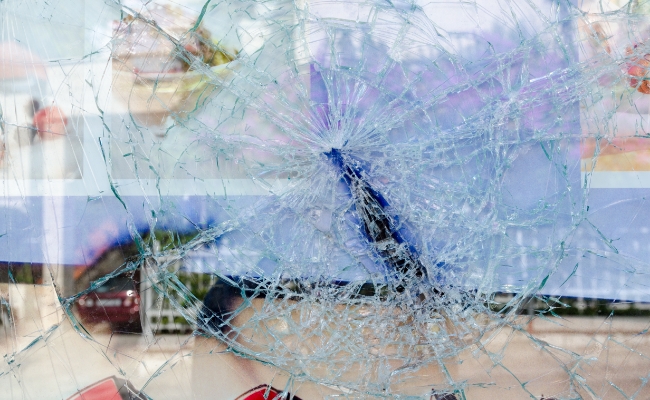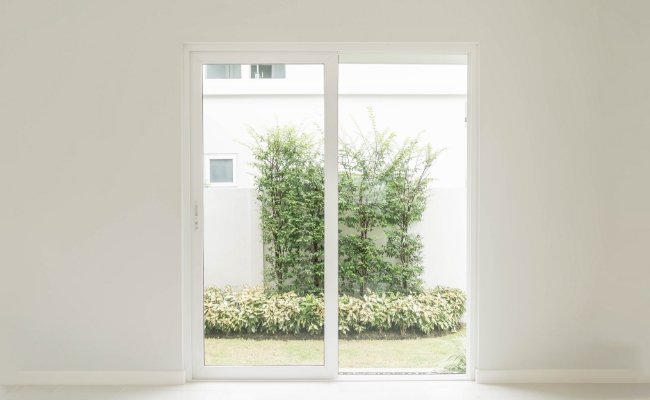Laminated Glass vs Tempered Glass: What's the Difference?

As a versatile material, glass plays a crucial role in modern architecture. Glass offers transparency, aesthetics, and structural support. Regarding ensuring safety and durability, two popular choices stand out: laminated glass and tempered glass. Both options have unique features and applications that make them essential in various contexts. This comprehensive guide will compare the main differences between laminated and tempered glass, exploring their strengths, weaknesses, and the scenarios in which each stands out.
Note: Both laminated and tempered glass can be used for enhancing home windows. Check our comprehensive guide on how to secure your home window for more information!
Basics of Laminated and Tempered Glass
Whether proceeding with home improvement projects or considering replacing new glass for business scenarios, you must understand what they are.
What is Laminated Glass?
Laminated glass is a type of safety glass created by sandwiching a polyvinyl butyral (PVB) or ethylene-vinyl acetate (EVA) between two or more tempered or regular glass layers. This sandwiched construction is achieved through lamination, where heat and pressure bond the layers. Manufacturers can add more layers to make the glass stronger. Initially designed for vehicle windshields, laminated glass was used to reduce the frequency of injuries in victims of car accidents. But right now, it can be used in different scenarios.
What is Tempered Glass?
Tempered glass, often toughened glass, is a type of safety glass specially processed to increase its strength and durability. This glass is manufactured using a controlled thermal or chemical treatment process, which makes it significantly more robust than regular annealed glass of the same thickness. The heating and cooling process is called tempering, where its name comes from. Tempered glass is more potent than ordinary glass. But if broken, it would shatter into a web-like interlocking pattern.
Comparison Table Between Laminated and Tempered Glass
The main difference between laminated glass and tempered glass lies in their manufacturing process: laminated glass is created by sandwiching a layer of PVB or between two or more layers of glass, while tempered glass is manufactured through heat treatment and rapid cooling.
Laminated Glass vs Tempered Glass: Key Differences
Laminated and tempered glass are two distinct types of safety glass with different properties and characteristics. Here are the key differences between the two.
Manufacturing Process
The manufacturing process of these two types is different. Laminated glass is produced by sandwiching a layer of polyvinyl butyral (PVB) or ethylene-vinyl acetate (EVA) between two or more glass layers, effectively bonding them through a lamination process. Tempered glass is made by subjecting regular glass to a controlled thermal or chemical treatment process, followed by rapid cooling, to increase its strength.
PVB: Polyvinyl butyral (PVB) is a synthetic resin commonly used to produce laminated glass.
EVA: Ethylene-vinyl acetate (EVA) is a copolymer, which means it comprises two different monomers: ethylene and vinyl acetate. EVA is a type of plastic that is known for its flexibility, durability, and impact resistance
Strength
The strength of these two types of glass also varies from each other due to their materials. Tempered glass is approximately 4 to 5 times stronger than regular annealed glass of the same thickness and can withstand more significant impacts. Laminated glass is also strong but less robust than tempered glass. It can withstand implications but is less resistant to direct blows than tempered glass.
Breakage Pattern
When these two types of glass break, you can also distinguish them through their breakage patterns. When laminated glass breaks, it typically holds together due to the interlayer (PVB or EVA) and forms a pattern of cracks like a spider web. It does not shatter into small pieces. But tempered glass shatters into tiny, harmless, and blunt-edged pieces when it breaks.
Sound Insulation
Sound insulation refers to the ability of glass to reduce or block sound transmission from one side of the glass to the other. Laminated glass provides better sound insulation due to the presence of the interlayer. Tempered glass also offers some sound insulation but is generally less effective than laminated glass.
UV Protection
With UV protection, glass can block or reduce the transmission of ultraviolet (UV) radiation from the sun. Laminated glass can block harmful sun ultraviolet (UV) rays and protect furnishings and interiors from fading and damage. However, tempered glass does not provide UV protection on its own. If you want to protect the interior from ultraviolet radiation, you can add UV-blocking coatings.
Laminated Glass vs Tempered Glass: Pros & Cons
Laminated and tempered glass are very popular among consumers, each with advantages.
Laminated Glass: Pros & Cons
Pros:
- Safety and Security: Laminated glass is designed to remain intact when shattered. If it breaks, the glass pieces adhere to an inner layer, reducing the risk of injury from sharp shards.
- UV Resistance: Laminated glass typically has built-in UV protection. It can block a significant portion of harmful ultraviolet (UV) radiation from the sun.
- Customization: Laminated glass can be customized with interlayer materials like tinted or colored films. These materials can serve for purposes or additional functionality.
Cons:
- Cost: Laminated glass tends to be more expensive and unsuitable for large-scale applications with limited budgets.
- Weight: Laminated is heavier than regular glass and requires additional structural support in some applications.
Tempered Glass: Pros & Cons
Pros:
- Enhanced Strength: Tempered glass can withstand higher impact forces and is more resistant to breakage.
- Heat Resistance: Tempered glass can withstand higher temperatures than laminated glass, making it suitable for use in applications exposed to heat, such as fireplace screens and oven doors.
- Cost: Tempered glass is generally more cost-effective and a budget-friendly option.
Cons:
- Limited Customization: Tempered glass cannot be easily customized with interlayers for additional functionality, such as UV protection or enhanced sound insulation.
- Noisy Breakage: When it breaks, tempered glass produces a loud noise due to the sudden release of stress in the glass. This can be startling but is less dangerous than shattering into sharp shards.
When to Use Laminated and Tempered Glass
Laminated and tempered glass find their usage in different scenarios. Here are some typical applications of these two types.
When to Use Laminated Glass
Laminated glass can be used in both home and business scenarios. Common applications include:
- Automotive Windshields: Laminated glass is used in the front windshields of most vehicles because it remains intact upon impact, reducing the risk of driver and passenger injuries.
- Building Windows: In areas where safety is crucial, such as glass doors, windows in hurricane-prone regions, or balconies, laminated glass can provide added security.
- Frameless Glass Railings: Laminated glass can be used for frameless glass railings due to its safety features and aesthetic appeal. For example, taller railings often use thicker laminated glass to ensure safety and structural integrity.

When to Use Tempered Glass
Typically, tempered glass is used in applications where durability and resistance to breakage are essential. Some application scenarios include:
- Shower Enclosures: Tempered glass is commonly used in shower doors and enclosures because it is less likely to break, and if it does, it shatters into small, relatively harmless pieces.
- Tabletops and Countertops: Tempered glass is suitable for surfaces where strength and resistance to impact are essential.
- Oven and Fireplace Doors: Due to its ability to withstand higher temperatures, tempered glass is used in oven doors and fireplace screens.
How to Choose Safety Glass for Home Windows
Choosing the right safety glass for home windows is essential for the overall security of these vulnerable points. Apart from the glass types, here are some other factors to consider.
Window Location
You need to identify the location of your home window. Some windows are located where safety is a concern or prone to impact, for example, windows near doors, staircases, or bathrooms. Choose more robust safety windows for these areas.
Glass Thickness
Glass thickness refers to measuring how thick a sheet or pane of glass is. The thickness of safety glass varies depending on the type and purpose. For instance, tempered glass is available in various thicknesses. Thicker glass may be needed for more oversized windows or windows in high-impact zones.
Home Aesthetics
Consider your home aesthetics and make the window glass blend with it naturally. You can choose some customizable types. For example, some safety glass types, like laminated glass, can be customized with tints, colors, or decorative patterns to match your aesthetic preferences.
Energy Efficiency
Some safety glasses can contribute to the cost savings of your home. You can choose types with good insulation properties to help reduce heating and cooling costs.
Installation
Safety windows require professional installation. You should hire experienced professionals familiar with the specific safety glass requirements and local building codes. Some glass manufacturers have installation services. You can consult them before purchasing.
FAQs
Is laminated glass better than tempered?
Laminated and tempered glass are manufactured by different techniques and serve other purposes. Tempered glass is better in areas with a low risk of glass breakage, and small and harmless glass fragments are acceptable. But if security is a priority, laminated glass is better for reducing the risk of injury.
What is the main difference between laminated and tempered glass?
The primary distinction between laminated and tempered glass is how they are made. Laminated glass is produced by layering a sheet of PVB between two or more glass layers, whereas tempered glass is formed through heat treatment and rapid cooling.
When should laminated glass be used?
Laminated glass should be used when safety is a primary concern. It is ideal for applications where glass breakage could pose a significant risk of injury.
Can burglars break laminated glass?
While laminated glass is designed to be more resistant to breakage and offers increased security compared to standard annealed glass, it is not entirely burglar-proof. Given enough time and determination, burglars may still be able to break laminated glass, but it can significantly delay their attempts and make it more challenging.
Conclusion
The choice between laminated and tempered glass depends on your needs and priorities. Laminated glass offers exceptional safety features and is ideal for applications where protection against shattering is crucial. On the other hand, tempered glass boasts strength and durability, and it is a better choice for areas where impact resistance is vital.
Both types have advantages and can enhance the security and aesthetics of your property. What kind of glass do you use at home? How do you like it? Let us know your thoughts, and share this article with your family and friends if you find it useful.
Related Posts
Search
Be in the Know
Security insights & offers right into your inbox
